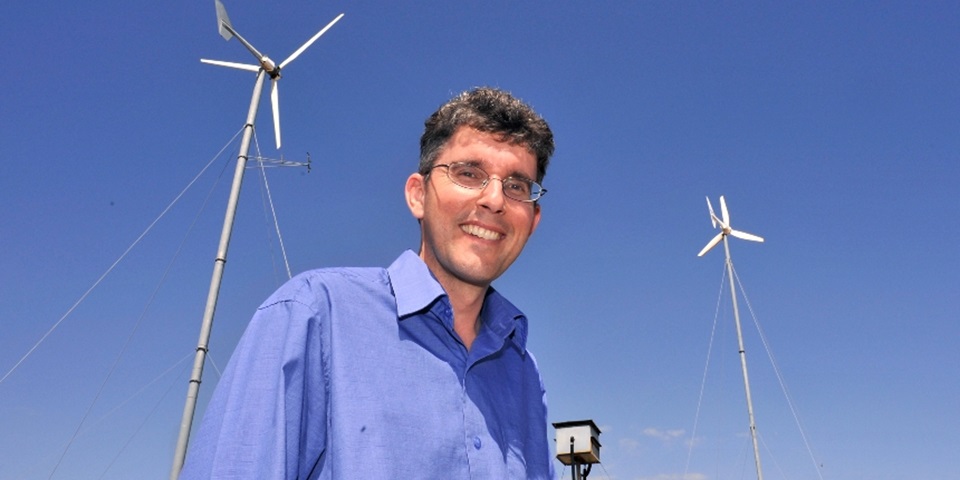News
Single blade wind turbines might take renewables through the roof

Wind remains the cheapest source of large-scale renewable energy. New wind turbines being developed at Murdoch University have the potential to make it even more efficient.
Wind was Australia's leading source of clean energy in 2020, according to the Clean Energy Council, supplying 36 per cent of the country's clean energy and 10 per cent of Australia's overall electricity. While it was shaded by solar in 2021, it still contributes 10 per cent of the total national energy mix.
This is a tremendous resource in the effort to decarbonize our power grid and one that is improving every year.
One of the latest innovations being developed and tested at the Harry Butler Institute by Dr Jonathan Whale is a wind turbine with a single vertical blade. This contrasts with the three bladed horizontal designs dotted across Australia that are synonymous with wind energy.
This new design is based on a single blade whose tip can be actively moved around in space.”
Dr Jonathan Whale
“So, when the turbine is started, the blade faces into the wind and the lift on the blade means that the blade tip, lifts off the ground, commencing its circuit about the turbine axis.”
Dr Whale was approached last year by inventor Mr Kim Schlunke to co-develop the novel turbine.
“This is a type of vertical-axis wind turbine, or VAWT, which have turbine rotors that rotate around an axis that is perpendicular to the ground.”
“There are very few commercial wind farms that use them because they have some significant disadvantages compared with conventional horizontal-axis wind turbines (HAWTs), including lower efficiency, difficulty in self-starting and a significant proportion of cost devoted to tower and support struts.”
“This single blade does not require any tower or support and so reduces the levelized cost of electricity achieved by the turbine, particularly when compared to the HAWT, the most common type of wind turbine,” says Dr Whale.
Levelized cost of electricity is a measure of the average current day cost of electricity generation for a generator over its lifetime. In financial terms, the return on investment.
“We predict that one of these new turbines can produce the same amount of power as three 1.65 MW HAWTs, with a single blade that is half the length of the combined length of all the blades from the three HAWTs.”
Dr Whale’s research is a proof-of concept study that involves a small prototype of the novel VAWT design. PhD student, Jawad Mezaal, is involved in designing and testing the control system, supervised by Dr Whale, Prof Parisa Bahri and A/Prof David Parlevliet.
This research supports United Nations Sustainable Development Goal 7, to ensure access to affordable, reliable, sustainable and modern energy for all.
For research news and opinion delivered to your inbox, sign up to our monthly newsletter.